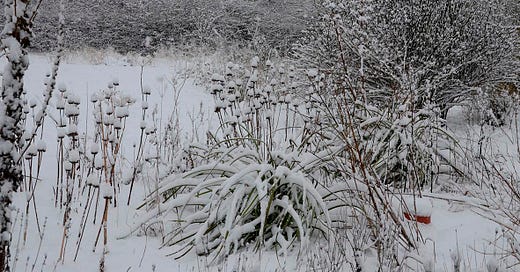Will we have a cold winter?
The chances of a cold winter plus my winter preparations in the garden
A couple of weeks ago, frost was forecast and I was racing around the garden, moving pots of lemons and salvias into the greenhouse, taking cuttings and generally preparing for cold weather. We got away with it. And now, of course, mild and very wet weather has returned.





